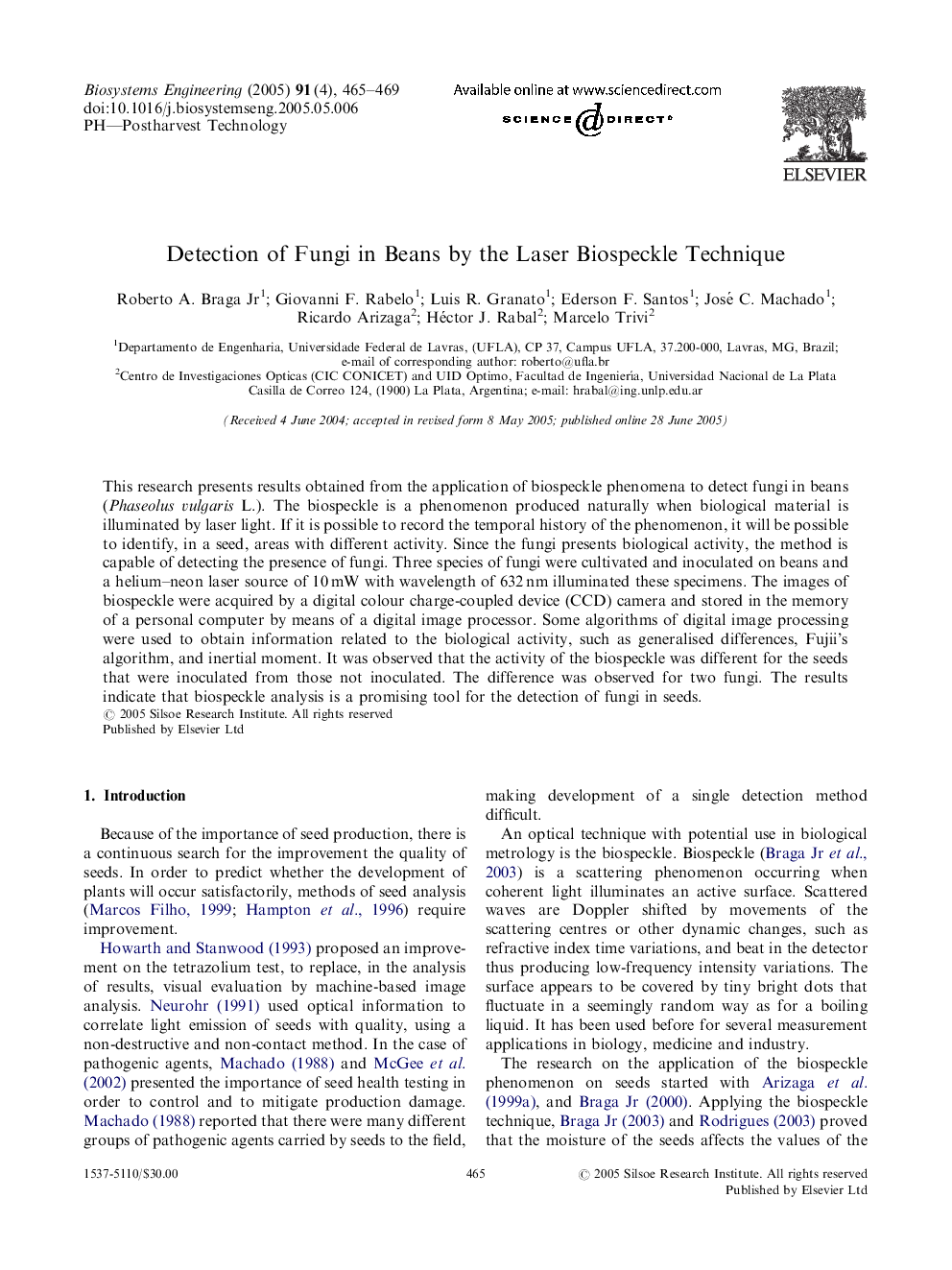| Article ID | Journal | Published Year | Pages | File Type |
|---|---|---|---|---|
| 10679822 | Biosystems Engineering | 2005 | 5 Pages |
Abstract
This research presents results obtained from the application of biospeckle phenomena to detect fungi in beans (Phaseolus vulgaris L.). The biospeckle is a phenomenon produced naturally when biological material is illuminated by laser light. If it is possible to record the temporal history of the phenomenon, it will be possible to identify, in a seed, areas with different activity. Since the fungi presents biological activity, the method is capable of detecting the presence of fungi. Three species of fungi were cultivated and inoculated on beans and a helium-neon laser source of 10Â mW with wavelength of 632Â nm illuminated these specimens. The images of biospeckle were acquired by a digital colour charge-coupled device (CCD) camera and stored in the memory of a personal computer by means of a digital image processor. Some algorithms of digital image processing were used to obtain information related to the biological activity, such as generalised differences, Fujii's algorithm, and inertial moment. It was observed that the activity of the biospeckle was different for the seeds that were inoculated from those not inoculated. The difference was observed for two fungi. The results indicate that biospeckle analysis is a promising tool for the detection of fungi in seeds.
Related Topics
Physical Sciences and Engineering
Engineering
Control and Systems Engineering
Authors
Roberto A. Braga Jr, Giovanni F. Rabelo, Luis R. Granato, Ederson F. Santos, José C. Machado, Ricardo Arizaga, Héctor J. Rabal, Marcelo Trivi,
